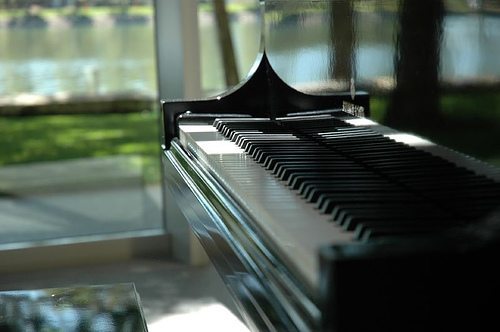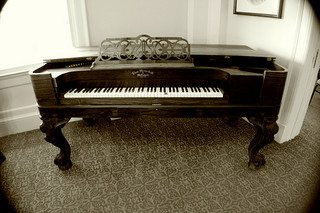
The temperature in your house or the room where you place the grand piano has an intense effect on the delicate elements that make up the musical instrument. High humidity will contribute to rust on the piano strings and tuning pins, and at the same time, distort the soundboard.
A very dry environment can cause the wood to crack and glued joints to separate along the way. To avoid rust and distortions, keep the humidity in the room as stable as possible. That can be done by placing humidifiers or Dehumidifiers accompanied by a hygrometer to notify you of any changes in humidity.
Do Not Place, the Grand Piano There!
When you are in doubt with reference to where the best place is to put the grand piano, you should always keep in mind the following places, which is not ideal:
– In the path of direct blowing air or sunlight
– Near fireplaces or working radiators
– Next to unsealed exterior walls
Therefore, the above places rule out basements, garages, enclosed porches, sunrooms, and any other rooms or areas that suffers from badly insulated walls. It is advisable to avoid heating and cooling rooms and vents that are not climate controlled.
Decorate the Room with Acoustics in Mind
The sound that comes from the piano as you play it will differ due to several factors. Typically, it depends on whether or not it is in tune, or if the room’s acoustics absorb or reflect the sound. In smaller areas or rooms, a grand piano sounds best when there is a 1.1 Sec reverberation time. That means that it takes about 1 second for the sound to reflect from the floors, walls, and ceilings of the room.
To accomplish this, you should place the grand piano in a room that uses an amalgamation of soft surfaces that absorb the sound and hard surfaces that reflect the sound. In doing so, it will place more prominence on the sound reproduction.
Surfaces that reproduce sound from a piano include glass windows, hardwood, wood paneling, and concrete. You can consider rugs, tapestries, carpeting, rugs, heavy drapes, and upholstered furniture to absorb the sound.
Measure the Space Properly
As previously, mentioned, grand pianos tend to take up more space than they actually need. Therefore, measuring the space properly first is imperative. You will need at least a 7 by 7 foot area and this includes the piano bench and sufficient room for you to maneuver around the instrument with ease.
Which grand piano model is your favorite?
photo credit: vmulky via photopin cc
photo credit: Mr.Lujan via photopin cc







